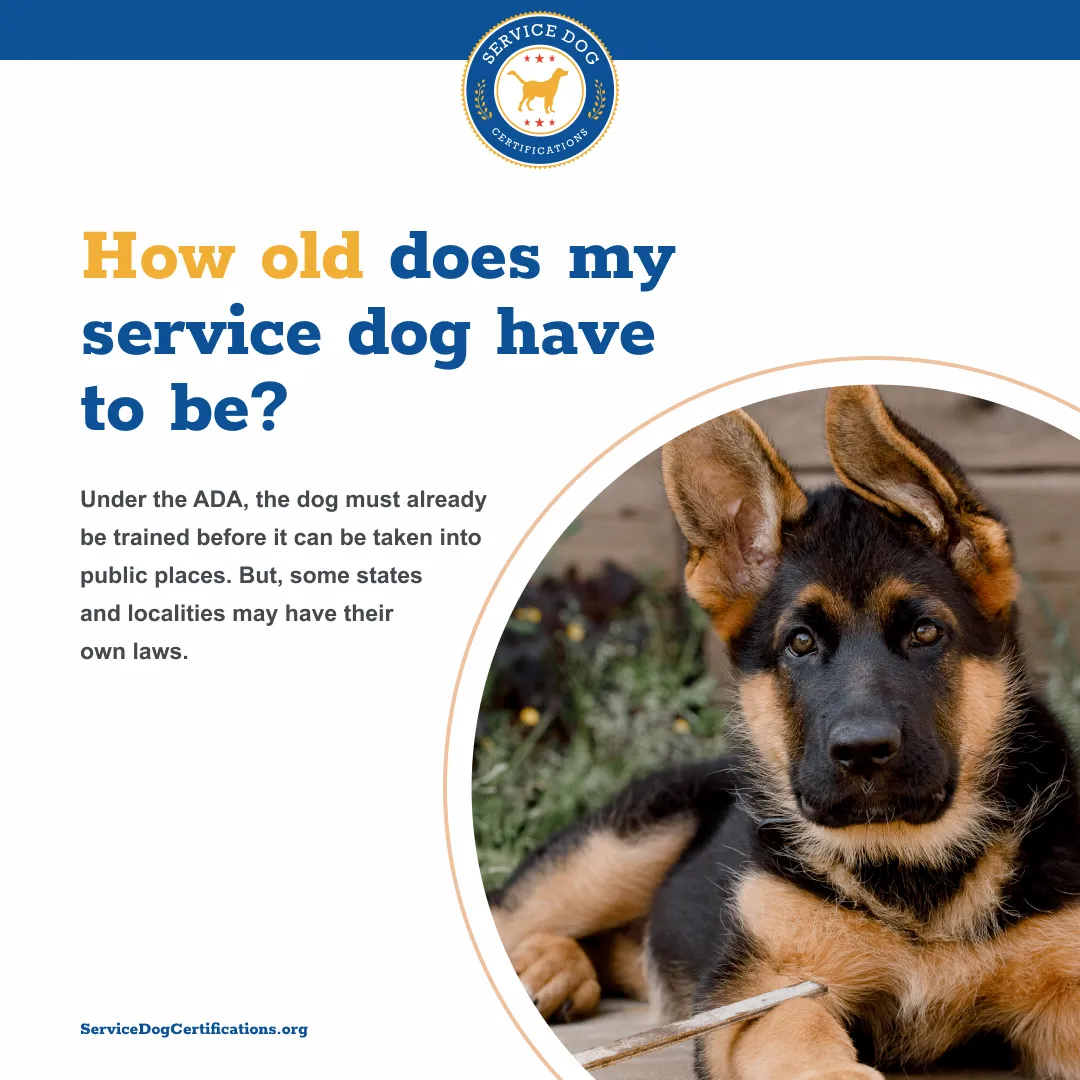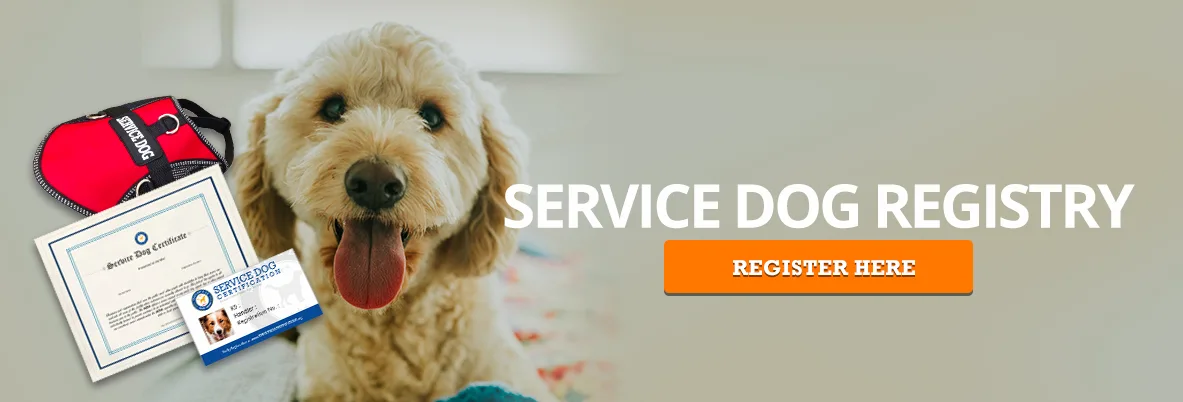How Old Does My Service Dog Have to Be?

There is no technical minimum age for a service dog, but practical considerations limit how young a service animal can be. Due to training requirements and developmental concerns, a puppy is generally not eligible as a service dog.
Under ADA rules, service dogs in training are not considered full-fledged service animals. A service dog must finish training before being granted public access rights.
Under the ADA, the dog must already be trained before it can be taken into public places.
ServiceDogCertifications.org
Some states and localities may have their own laws that allow for service dogs in training to be given public access rights. However, even if your local laws grants rights to a service dog in training, a young puppy is still likely ineligible to qualify as a service dog.
Puppies generally can’t qualify as service dogs for two main reasons:
1.
A puppy in its early developmental stages is not ready for formal training.
Many trainers and organizations do not recommend beginning formal service dog training until a dog is at least 6 months of age. A very young puppy may not be ready for the rigors of undergoing intensive task training. Many trainers encourage owners to allow their puppies to be puppies, and that means allowing them to play, socialize and explore their curiosities.
2.
Service dog training is an involved process that can require several months to years, depending on the skillset needed.
The other reason a puppy usually can’t be a qualified service dog is that the actual training process can take significant time. Under ADA rules, a service dog must be individually trained to perform a job or task relating to the handler’s physical or psychiatric disability.
Service dogs are trained for an enormous variety of tasks. Simple tasks can be mastered within weeks or months, but complex tasks or sets of interrelated tasks can take years to master.
In addition to disability-related task training, a service dog must also be trained for public access skills. That means the ability to be in public on best behavior, under full control, and without becoming distracted by the environment. It can take time for a puppy to learn and mature into these abilities.
Once a service dog is fully trained, handlers can use accessories like ID cards, vests, certificates, and tags to easily identify their animal as a service animal. ServiceDogCertifications.org specializes in providing these tools to service dog owners for their convenience, safety, and privacy.
About the Author: The writing team at Service Dog Certifications is made up of folks who really know their stuff when it comes to disability laws and assistance animals. Many of our writers and editors have service dogs themselves and share insights from their own experiences. All of us have a passion for disability rights and animals.
6 comments
Leave a Reply Cancel reply
Latest Posts

Dangerous Materials Hiding in Your Dog Products
Jake’s German Shepherd began developing strange rashes around his collar. Three vet visits later, they figured out the leather was treated with chromium — a chemical that irritates sensitive skin. Jake had no idea his dog’s collar contained industrial chemicals. Most dog owners don’t know what goes into the products they buy. Many companies use […]

Read More

Can You Bring a Service Dog to a Basketball Game?
Yes, you absolutely can bring your service dog to basketball games. Whether you’re heading to your local high school tournament, a packed college rivalry game, or splurging on NBA tickets, the Americans with Disabilities Act protects your right to be accompanied by your service dog anywhere the public can go. When you arrive, venue employees […]

Read More

Best Pet Health Insurance Providers
If you own a pet, you know how important — and expensive — vet care can be. One way to offset those costs is to purchase pet health insurance. Like typical health insurance, pet insurance is available at many price points, and can cover all, most, or only some of your vet-related costs. It can […]

Read More



Can I get a dog that is already trained? I’m asking because I have CLL cancer and I also have depression, anxiety I know I would not be able to train the dog.
Thank you Aurora
There are organizations that offer fully trained dogs and professional trainers that will train a service dog for you. Unfortunately we do not give referrals for service dog adoptions, but we would be happy to assist you if and when you do qualify for a service dog.
Do I qualify for a service dog for my ptsd that causes me not to be able to go anywhere on my own?
To qualify for a service dog you must meet two requirements: 1. Your condition must qualify as a disability and 2. Your condition must be assisted somehow by a trained service animal that performs specific tasks. Please see this post for more info on PSDs: https://www.servicedogcertifications.org/psychiatric-service-dog/
What is the first step once you settle on the right dog breed for your service 🐕🦺 animal?
My doctors back me on this due to my documented illnesses, daily struggles, and mobility issues. I was thinking about contacting the ADA to find out if they cover any expenses…or would that be wasting my time?
The “ADA” refers to a set of laws (the Americans with Disabilities Act). Unfortunately it does not provide for the coverage of expenses for service dog training.